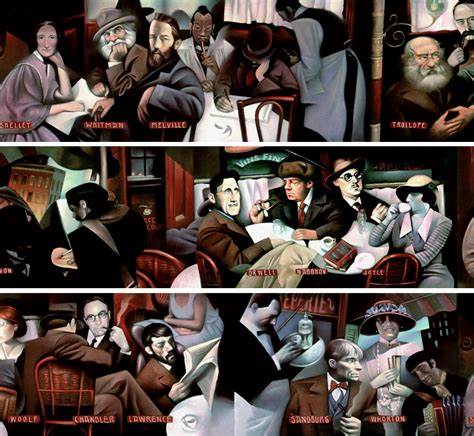The Revolution Begins … in Books
- Christina Dendy

- Aug 4, 2020
- 3 min read
I’m going a little out on a limb here. I think we have a problem with how we are approaching literature and English in our schools. Yes, yes, I know there are lots of problems to address, and this is not an attack on teachers and public schools, whom I support wholeheartedly. But this.
I was thinking about my son’s complaints about his freshman and sophomore reading material, and I was looking at standards and Common Core and at his reading lists and at recommended lists like this one. Most high school lit classes pull from these titles, and honestly, some of my favorite books are on there. I want my kids to read 1984, To Kill a Mockingbird and Lord of the Flies, but I have the same issue with these lists as I do with the predominantly white, male author mural in B&N bookstores. They’re out of step. They’re limited. They’re biased. They’re not enough.
Before we can get kids interested in traditional, classic, dated, old-school, whatever you want to call it literature, we need to get them reading. We need to get them involved and caring. We need them thinking. Why require modern students, really, to read a book about race relations written by a Southern white woman decades ago but not something by Walter Dean Myers, Angie Thomas, Jason Reynolds, Ta Nehisi Coates, Kwame Alexander? If you skim enough high school reading lists you’ll get a few Jewish authors like Anne Frank and Elie Wiesel and you’ll get a few Black authors like Zora Neale Hurston, Langston Hughes, Toni Morrison, and Maya Angelou. That’s about it. Possibly Paul Lawrence Dunbar and Alice Walker. You might read excerpts or samples from Frederick Douglass, Sojourner Truth, Phillis Wheatley, MLK and others in social studies courses. Great, and maybe history class is the place today for excerpts from some of the other most favored “classics.” Cross-curricular connections rock! But you don't get all of those authors. They are wonderful, but they are a small selection of a wide field of extraordinary authors.
The reading lists for English and American literature are grossly skewed, and it’s losing our kids. It does them, our society, and our culture a disservice. You have to teach kids to love reading first. At the least, our ELA courses should be a balance of contemporary and historic authors and certainly balanced across the various ethnic and racial experiences of our demographics. What about contemporary Muslim YA authors like Samira Ahmed, S.K. Ali, and Randa Abdel-Fattah? Arab-American poet and novelist Naomi Shihab Nye? Hispanic authors like Meg Medina, Pam Muñoz Ryan, Benjamin Alire Sáenz, Guadalupe Garcia McCall and Matt De La Peña? Vietnamese American author Thanhha Lai? There is such a breadth of titles and experiences out there, and having read many of them, I can tell you that they are books that speak to young people and that young people as well as old can sink their mental teeth into. Likewise, there are remarkable modern as well as historic Native American, East and South Asian, and white authors out there, covering a range of topics in a variety of ways. I'm leaving so many out.
Here are some other books to check out:

The point of diverse reading is variety and inclusion. Honestly, I’m a firm believer in “it doesn’t matter what they read so long as they read,” but there are so many amazing contemporary novels, short stories and poems as well as graphic novels available, and I think, really, focusing on those rather than on the oldies but goodies, at the secondary school level, just might help revolutionize schools. Yes, teachers have limited hours and resources, I know, so why waste so many of them on books that many if not most students resist from page 1, if not from the cover and title? As much as I love those books, and realize their value, it just doesn’t make sense. You have a much better chance of engaging young people, generating discussion, encouraging them to seek out more, etc., if you hit on books written in contemporary voices, with issues relevant to their lives and communities, with characters reflective of them and their fellow students.
Just a thought. Not sure what to do with it yet.
(from September 4, 2018)









Comments